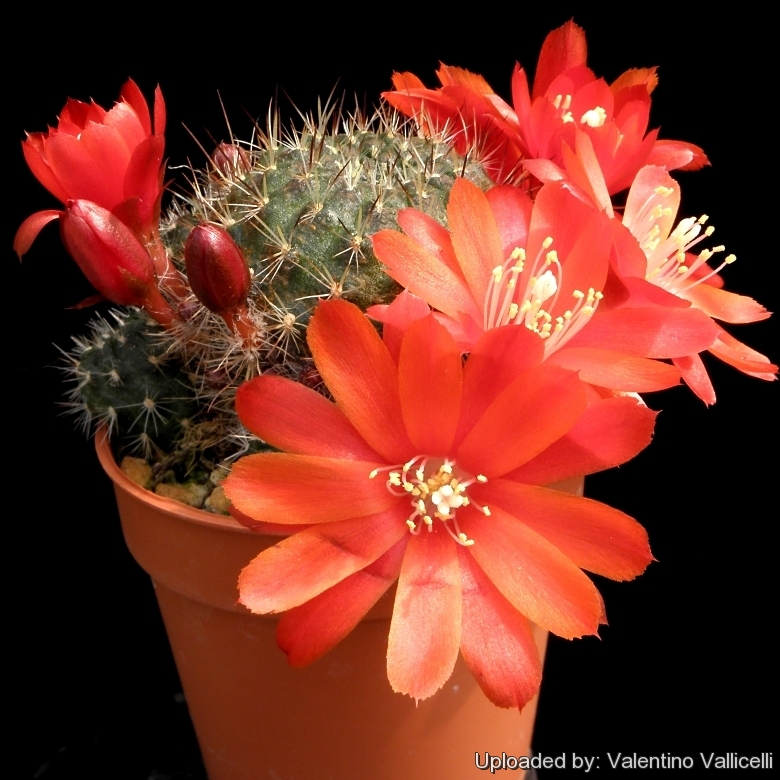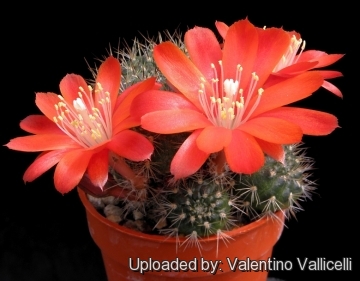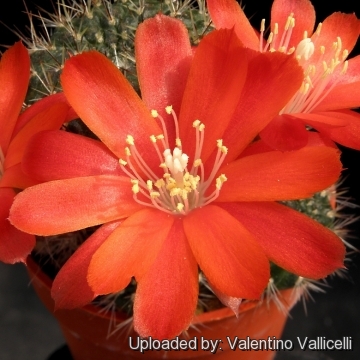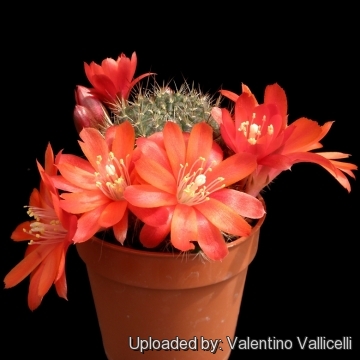Donate now to support the LLIFLE projects.
Your support is critical to our success.
Your support is critical to our success.
= Rebutia fusca F.Ritter
Kakteen Sukk. 28(4): 78 (1977)
Accepted Scientific Name: Rebutia spegazziniana Backeb.
Kakteen-Freunde ii. No. 1, (1933); Backeb. Blatter Kakteenforsch. 1934, Pr. 2,[p. 8].

Aylostera fusca (Rebutia fusca) Photo by: Valentino Vallicelli
Synonyms:
- Rebutia fusca F.Ritter
- Aylostera fusca (F.Ritter) Mosti & Papini
See all synonyms of Rebutia spegazziniana
back
Accepted name in llifle Database:Rebutia spegazziniana Backeb.
Kakteen-Freunde ii. No. 1, (1933); Backeb. Blatter Kakteenforsch. 1934, Pr. 2,[p. 8].
Synonymy: 35
- Rebutia spegazziniana Backeb.
- Aylostera spegazziniana Backeb. in Backeb. & F.M.Knuth
- Echinorebutia spegazziniana Backeb.
- Rebutia froehlichiana Rausch
- Aylostera froehlichiana (Rausch) Mosti & Papini
- Rebutia fusca F.Ritter
- Aylostera fusca (F.Ritter) Mosti & Papini
- Rebutia mamillosa Rausch
- Aylostera mamillosa (Rausch) Mosti & Papini
- Rebutia mamillosa var. australis F.Ritter
- Rebutia mamillosa var. orientalis F.Ritter
- Rebutia patericalyx F.Ritter
- Aylostera patericalyx (F.Ritter) Mosti & Papini
- Rebutia rubiginosa F.Ritter
- Aylostera rubiginosa (F.Ritter) Backeb.
- Rebutia spegazziniana var. atroviridis (Backeb.) Šída
- Rebutia spegazziniana var. boliviensis n.n., Rausch
- Rebutia boliviensis hort.
- Rebutia sumayana Rausch
- Aylostera sumayana (Rausch) Mosti & Papini
- Rebutia tarijensis Rausch
- Aylostera tarijensis (Rausch) Mosti & Papini
- Rebutia tarvitaensis F.Ritter
- Aylostera tarvitaensis (F.Ritter) Mosti & Papini
- Rebutia tuberosa F.Ritter
- Aylostera tuberosa (F.Ritter) Backeb.
- Rebutia vulpina F.Ritter
- Aylostera vulpina (F.Ritter) Mosti & Papini
- Rebutia fiebrigii var. vulpina hort.
- Rebutia vulpes F.Ritter
- Rebutia waltheriana Backeb.
- Aylostera waltheriana (Backeb.) Y.Itô
- Rebutia zecheri Rausch
- Aylostera zecheri (Rausch) Mosti & Papini
- Lobivia atrovirens var. zecheri (Rausch) Rausch
back

Aylostera fusca (Rebutia fusca) Photo by: Valentino Vallicelli

Aylostera fusca (Rebutia fusca) Photo by: Valentino Vallicelli

Aylostera fusca (Rebutia fusca) Photo by: Valentino Vallicelli
Send a photo of this plant.
The gallery now contains thousands of pictures, however it is possible to do even more. We are, of course, seeking photos of species not yet shown in the gallery but not only that, we are also looking for better pictures than those already present. Read More...
The gallery now contains thousands of pictures, however it is possible to do even more. We are, of course, seeking photos of species not yet shown in the gallery but not only that, we are also looking for better pictures than those already present. Read More...
| Your Actions | |
|---|---|
| Back to Aylostera index | |
| Back to Cactaceae index | |
 |
Back to Cacti Encyclopedia index |









